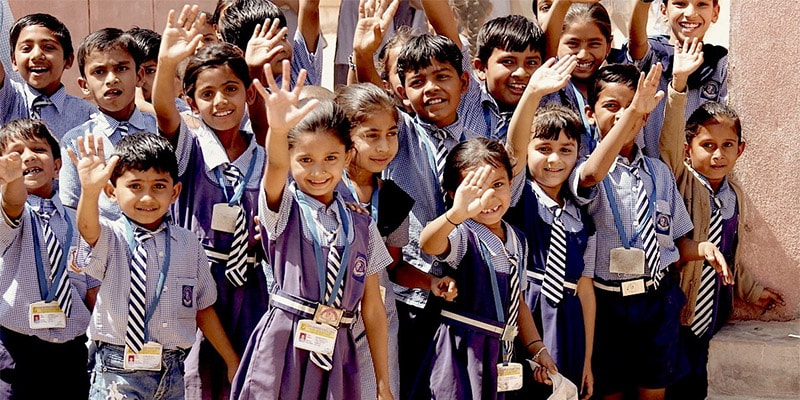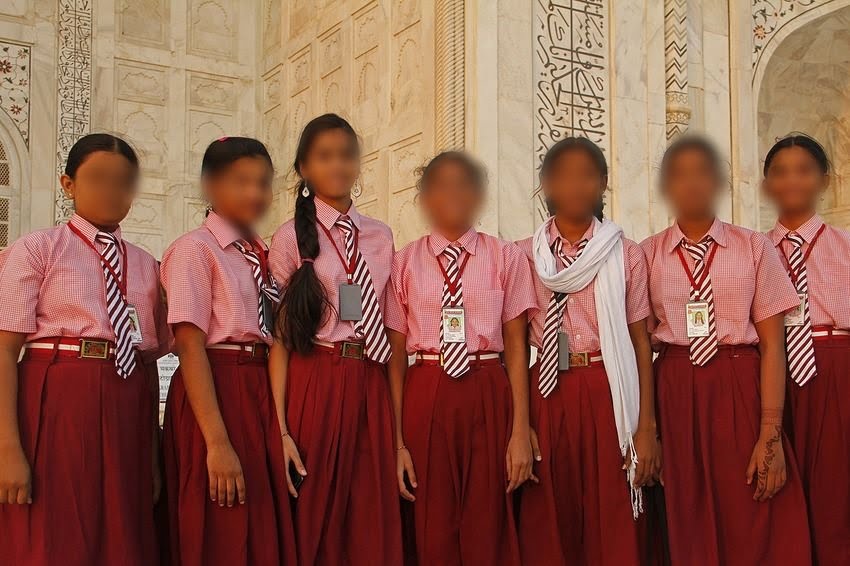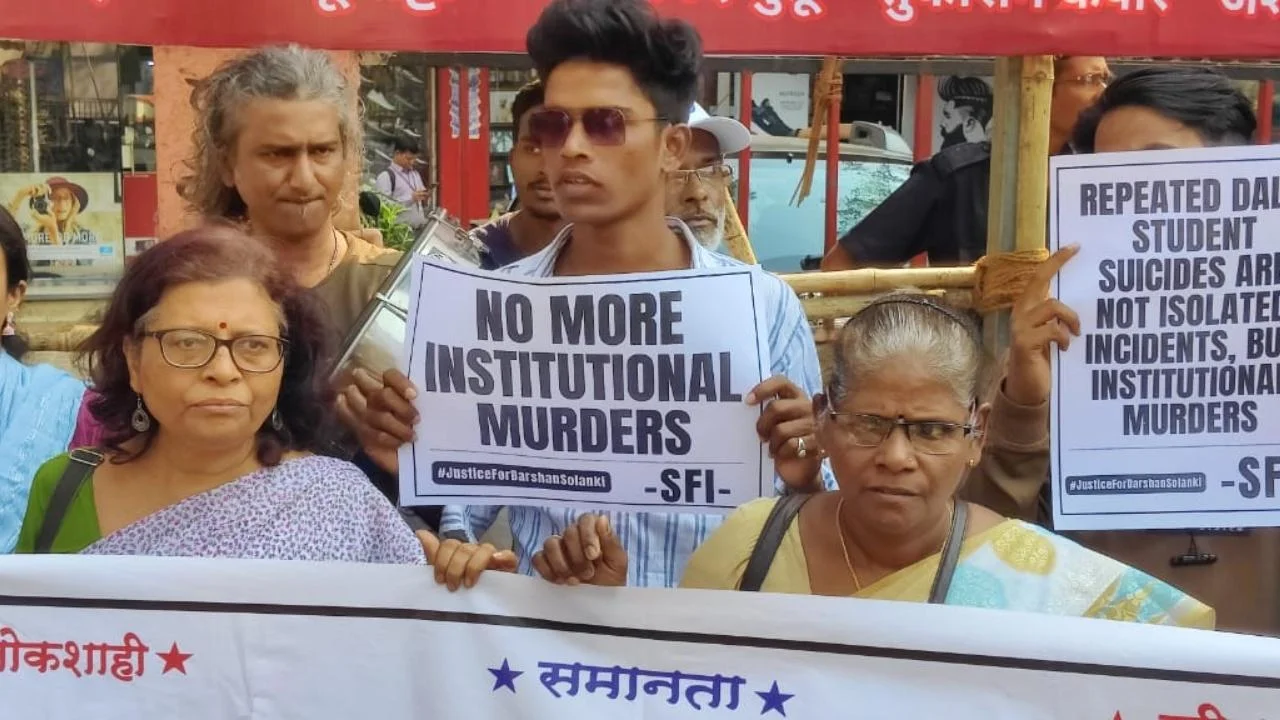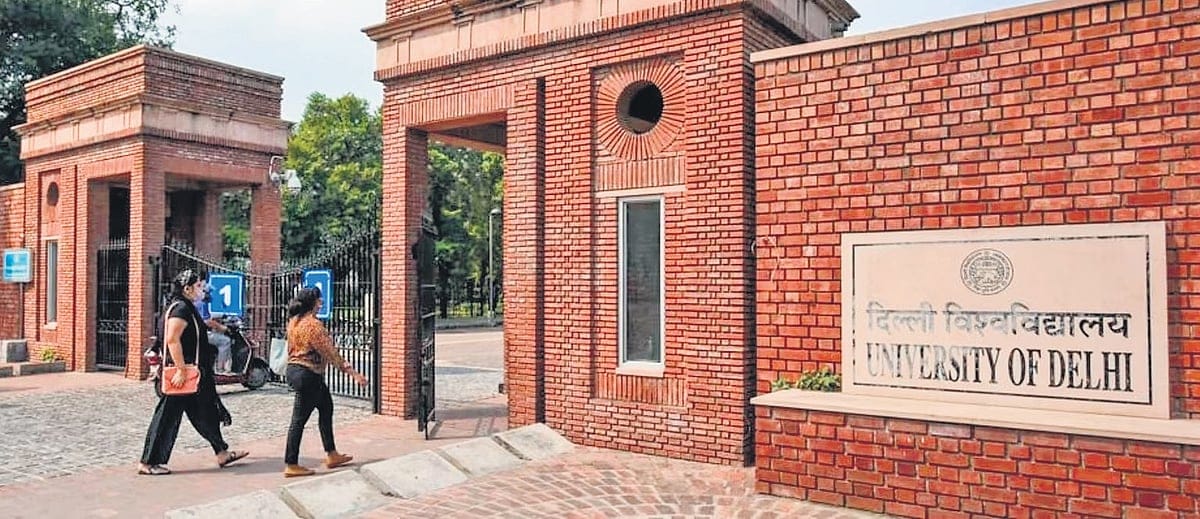We are born unequal, in some form or the other. And a school uniform is one of the first unifying things that happen to those who have the privilege to attend school. And where schooling itself is a matter of chance, uniform for the majority of children in this country is not a choice they get a chance to be concerned with. As a social and cultural force, clothes are an imperative cultural testament of the social positioning of the body and the self. Aside from fulfilling their basic functions of protecting the body from heat or cold, clothes also depict the individual adorning them. While clothes cover the body, they also uncover myriad aspects about the social position of where the body stands as well as the other bodies which co-exist with it.
However, contrary to other forms of dress which give more scope for expression, a school uniform provides less chance of self-expression to the individual.
Aside from fulfilling their basic functions of protecting the body from heat or cold, clothes also depict the individual adorning them. While clothes cover the body, they also uncover myriad aspects about the social position of where the body stands as well as the other bodies which co-exist with it. However, contrary to other forms of dress which give more scope for expression, a school uniform provides less chance of self-expression to the individual.
Also read: The Eroding Autonomy Of Educational Institutions Under ‘Modi Raj’
Do most students have the option to choose uniforms in India?
As per Census 2011, 68.84 per cent of the Indian population lives in rural areas. Reports state that 71 per cent of students from rural areas are admitted to government schools. Given the systemic structure and the drawbacks in the forms of ill-funding of government schools and additional privileges of private schools encompassing extra co-curricular activities, coaching, a sense of status, and a discriminatory attitude of the elite to only gel among themselves, it is mostly the oppressed sections of students who are admitted to government schools.
The proportion of enrolment to total enrolment in government schools at the elementary level is 76.5 per cent for ST, 68.8 for SC, and 55.6 for OBC students. Furthermore, the proportion of enrolment of SC students in private unaided schools at elementary level are 13.6% and ST students are 4.7%. Given these stark disparities, it is obvious that schooling itself is a right that is being fought in a country inundated with illegal child marriages, female foeticide and forceful marriages of teenage girls, sometimes even to men decades older to them.
Given the income inequalities within the communities owing to a casteist oppressive system, the annual income of SC, ST and OBC households are 21%, 34% and 8% lower than the average national income respectively, whereas top 10 per cent upper caste households have hoarded 60 per cent wealth, and the upper castes in India earn 47 per cent more than the average annual income.
s to ponder about whether there should be uniforms or not, it is a question not to be asked for “India”, but only for an “elite and exclusive India” — an abysmal percent of the population as compared to the masses. In a country where more than 33% of students belonging to Scheduled Castes, Scheduled Tribes and Other Backward Classes drop out of state government schools in Class 10, owing to myriad factors including poverty; in a large number of destitute households in India, the government school uniform is often the only proper attire that many disadvantaged kids actually possess.
In a country where more than 33% of students belonging to Scheduled Castes, Scheduled Tribes and Other Backward Classes drop out of state government schools in Class 10, owing to myriad factors including poverty; in a large number of destitute households in India, the government school uniform is often the only proper attire that many disadvantaged kids actually possess.
How does having a uniform help?
In such an unequal environment, discrimination is bound to occur. A uniform, in that case, is an equalizer amidst socioeconomic distinctions. Umpteen surveys indicate that students face bullying, harassment and violence at school based on how they are dressed. And an absence of uniforms would put caste and class privilege at play. Schools in the West have also mentioned implementing a system where students wear uniforms so that students don’t wear gang attire and regalia, which might lead to bullying.
Additionally, school uniforms make the environment safer since they help teachers identify the students from a safe distance and hence, are helpful to keep unauthorised people away. They are also more fruitful for use during field trips and on-site learnings. Also, they build a sense of solidarity and oneness towards the school. In a divisive society, a uniform, ever since a tender age, might be a pedagogical tool to inculcate a sense of togetherness, institutional affiliation and osmosis. In school uniforms, students don’t have to worry about the peer pressure of being dressed in the latest trend. This pressure would prove to be disastrous for families coming from financially disadvantaged backgrounds.
In a divisive society, a uniform, ever since a tender age, might be a pedagogical tool to inculcate a sense of togetherness, institutional affiliation and osmosis. In school uniforms, students don’t have to worry about the peer pressure of being dressed in the latest trend. This pressure would prove to be disastrous for families coming from financially disadvantaged backgrounds.

A nexus between private schools and commissioned vendors
While it is imperative to understand how uniforms are salient for the oppressed strata of the country, it is also paramount to note how a nexus of private schools and pre-decided commissioned textile shops, tailoring units and vendors force parents to buy multiple school uniforms, shoes, books and stationery at prices higher than the retail prices where some schools stress on a new uniform every year. When parents protest; the schools curtly reply that they do not want the students to wear “faded uniforms“. At times, the management makes minor changes in the uniforms forcing parents to buy new uniforms. These schools, together with a certain section of affluent parents, represent a flagrant manifestation of cultural and social capital. While attempts aimed at uniformity are welcome, unjust practices extorting money are tantamount to making an exploitative system out of education.
Also read: Why Gender Sensitivity Must Begin At School
But school uniforms are sexist too
“There are enough problems with sexual harassment in school and we should not make it worse (by requiring girls to wear skirts),” reads a quote from Off Our Backs, a news journal. They further suggested that girls in short skirts are a male fantasy.
The journal further quotes a New York City student, Shameika Terrell, who hates her uniform. She says, “I don’t like it. I want to be able to wear my slacks and shirts and my sneakers. I want to be able to play basketball without my skirt flying up. I can’t dribble in a dress.” Meanwhile, her mother is in favour of Shameika wearing a skirt and says, “It makes the female have a mature look—a sense of being a lady.” The journal further sarcastically mentions that this probably means ladies can’t play basketball.
While uniforms do bring in a sense of uniformity, it is quintessential to consider whether the rules of uniformity are equal for all genders. Historically and even today, schools tend to have lenient rules for boys, as well as of boys breaking them, while for girls, the rules are not only stringent but girls are also slut-shamed by their own teachers for even a misplaced strand of hair. It is therefore pertinent that in the schools’ endeavour to bring about uniformity, the dehumanisation of female autonomy should not happen.
School uniforms might not be fashionable, but nothing uniform is exclusive either, and fashion by design thrives on exclusivity. And schools, by their foundation itself, are supposed to be inclusive.
Featured image source: Pinterest
About the author(s)
Ankita Apurva was born with a pen and a sickle.






